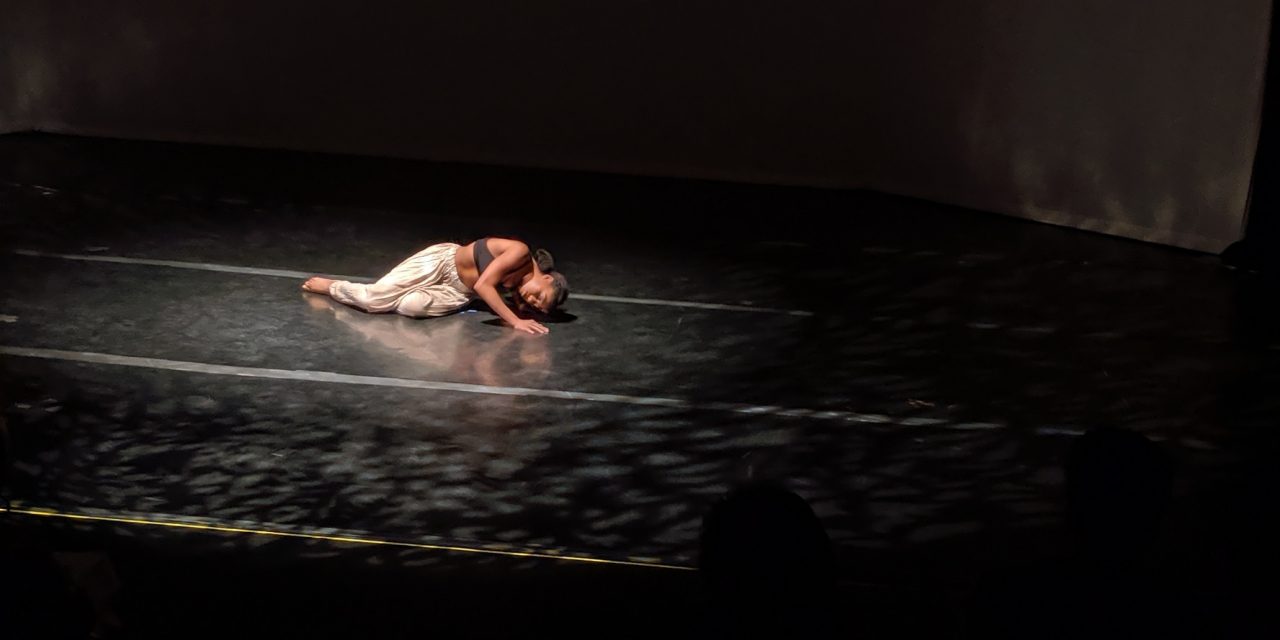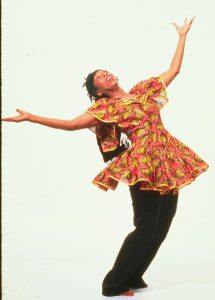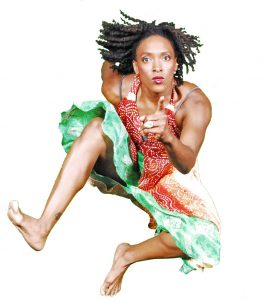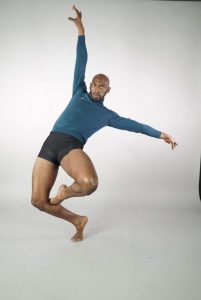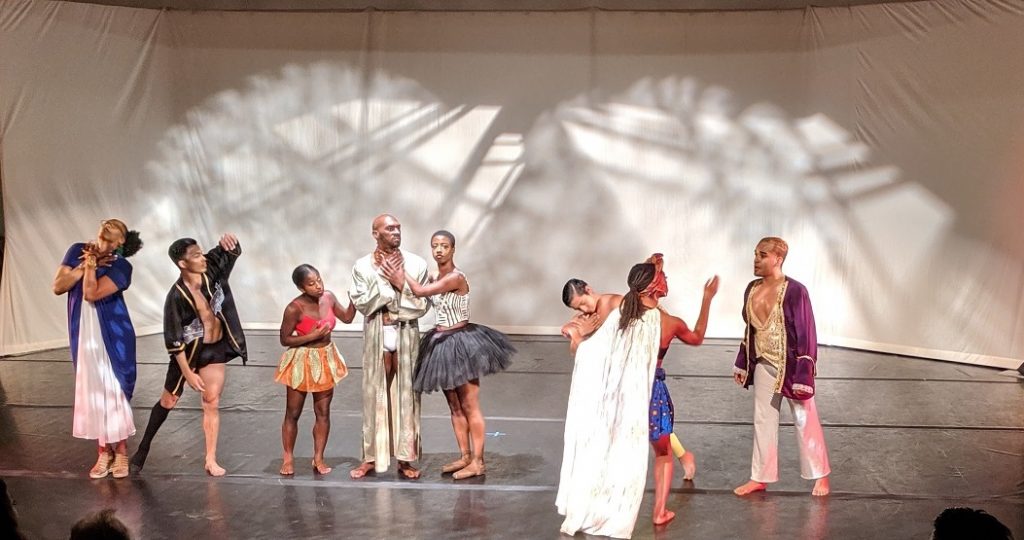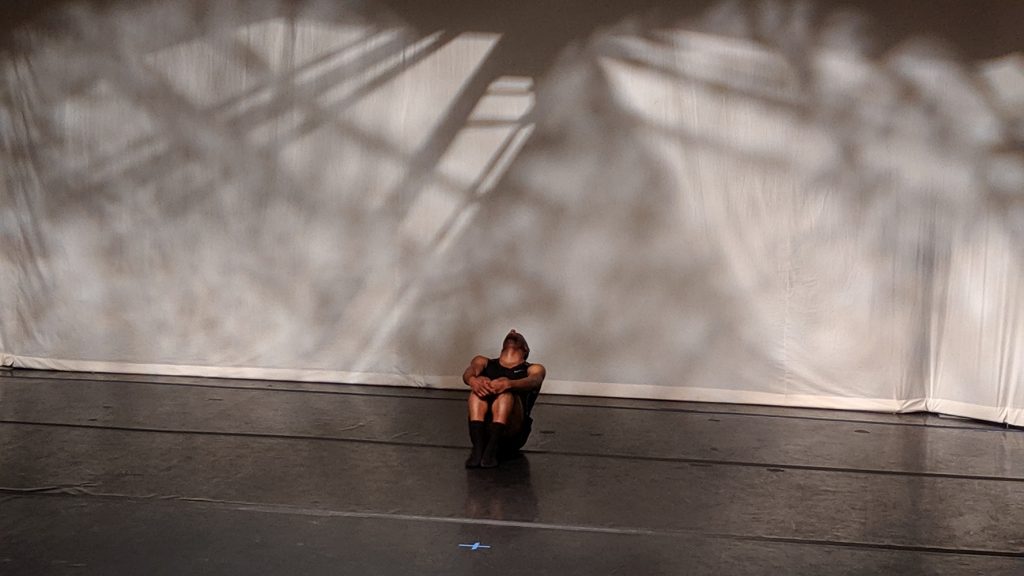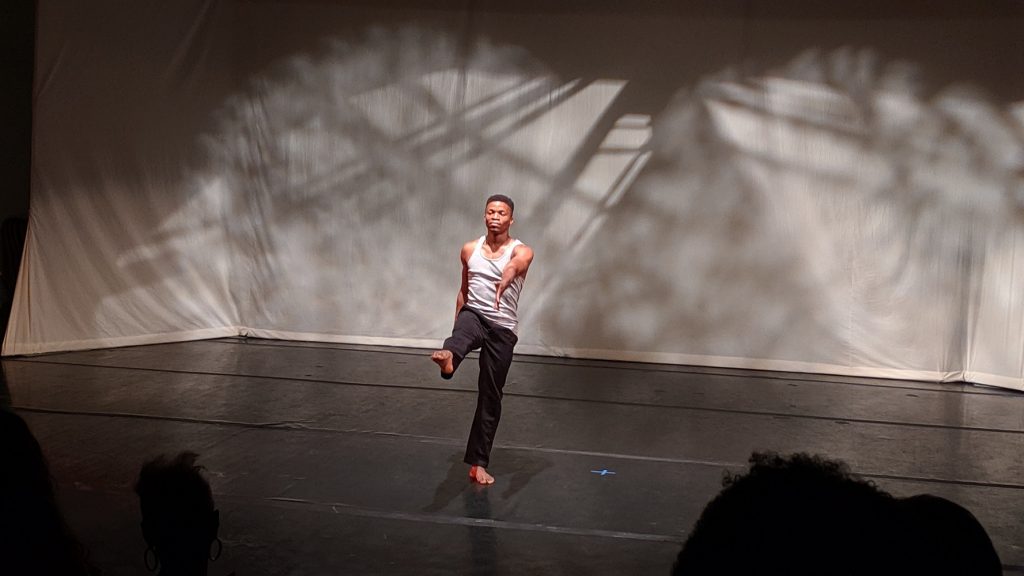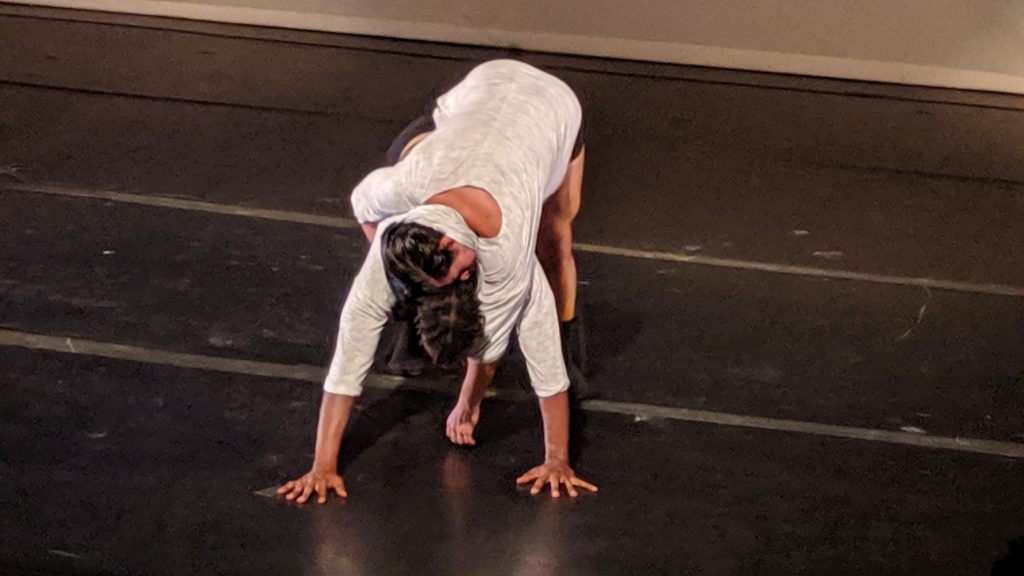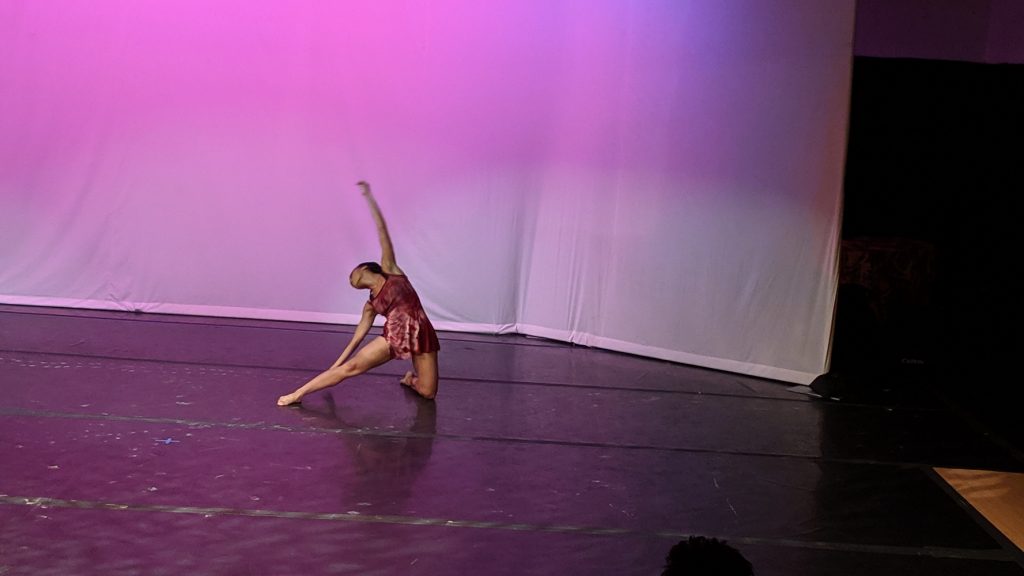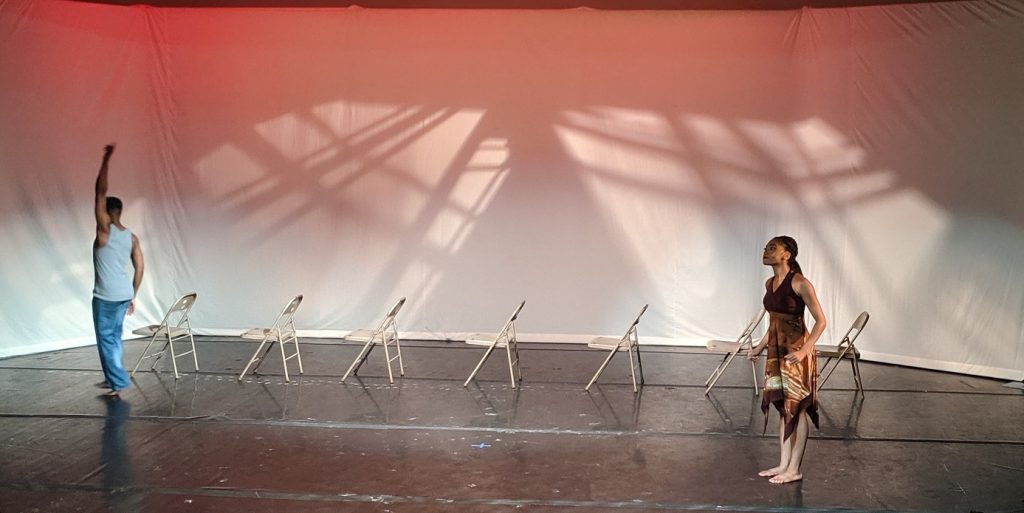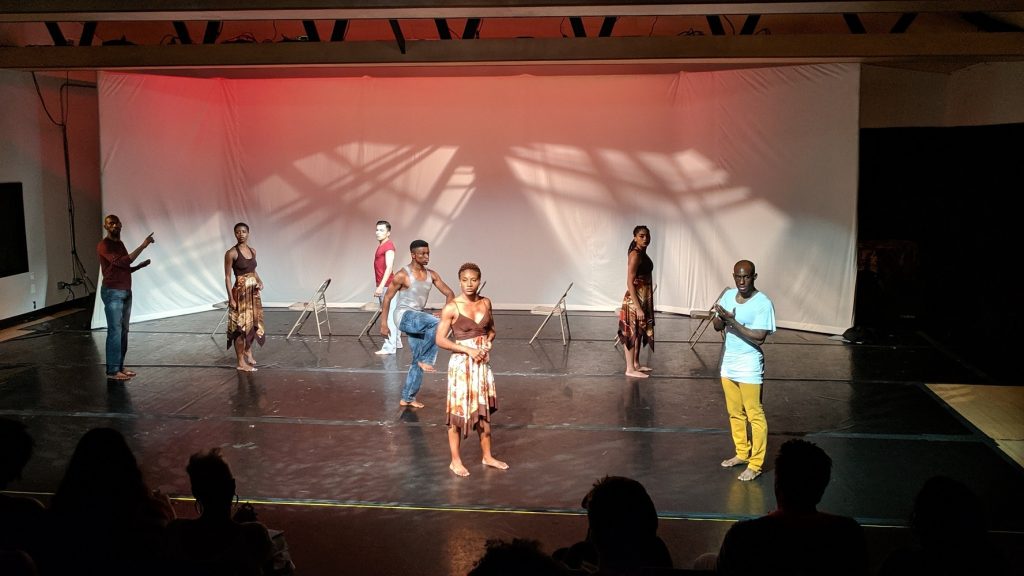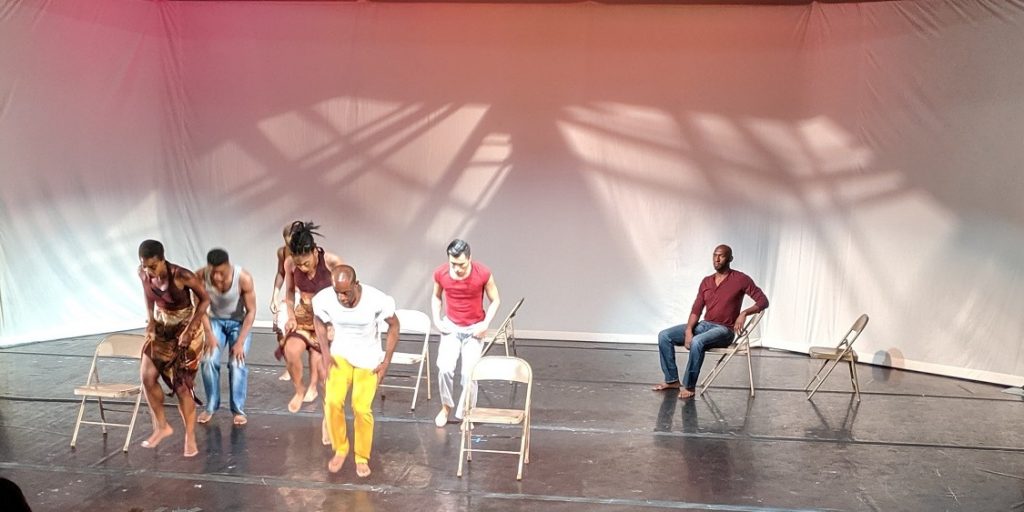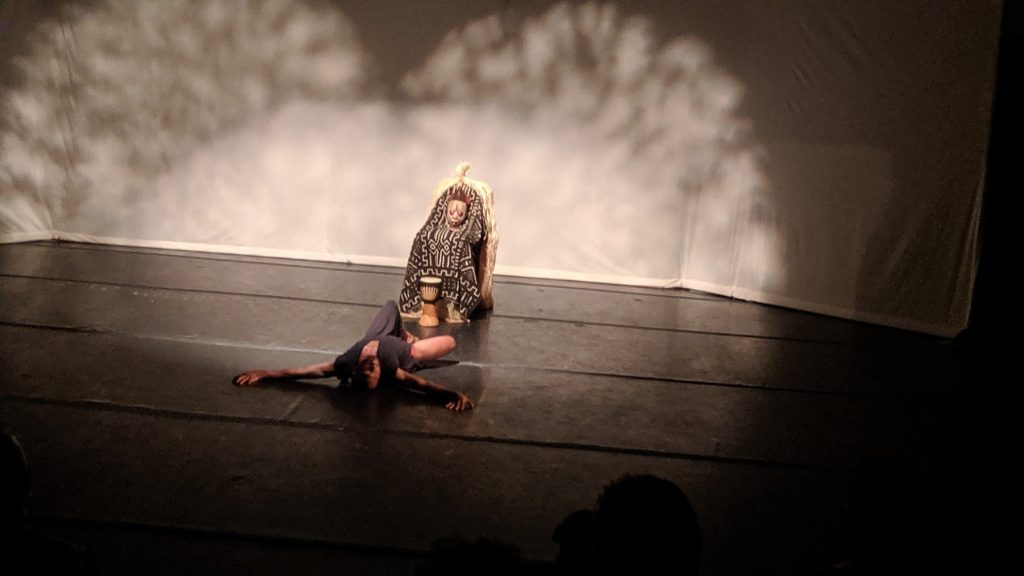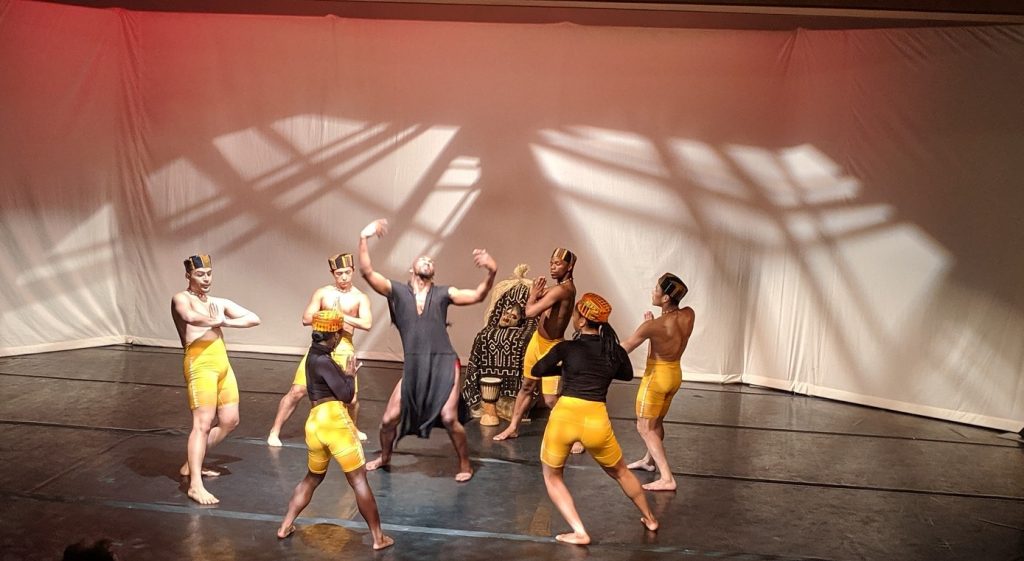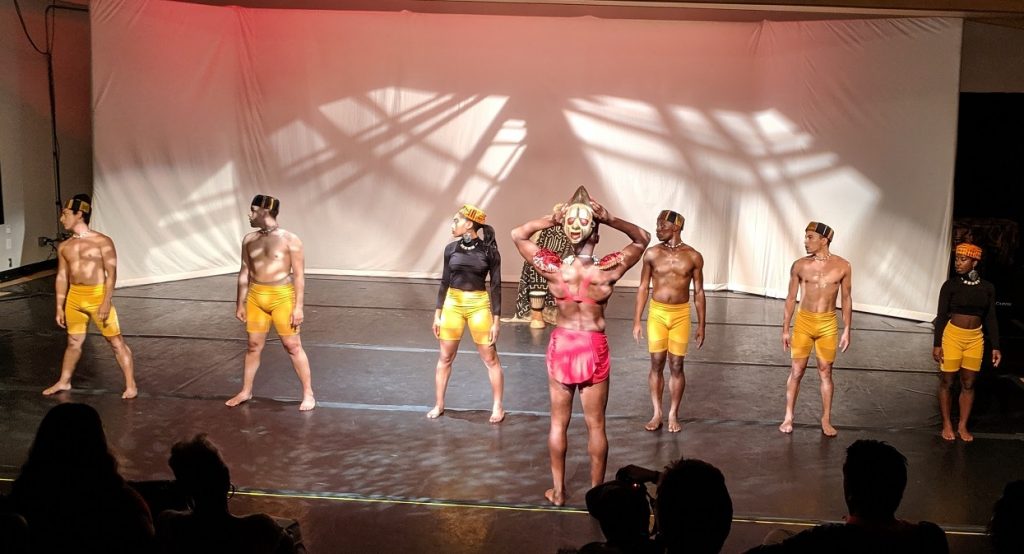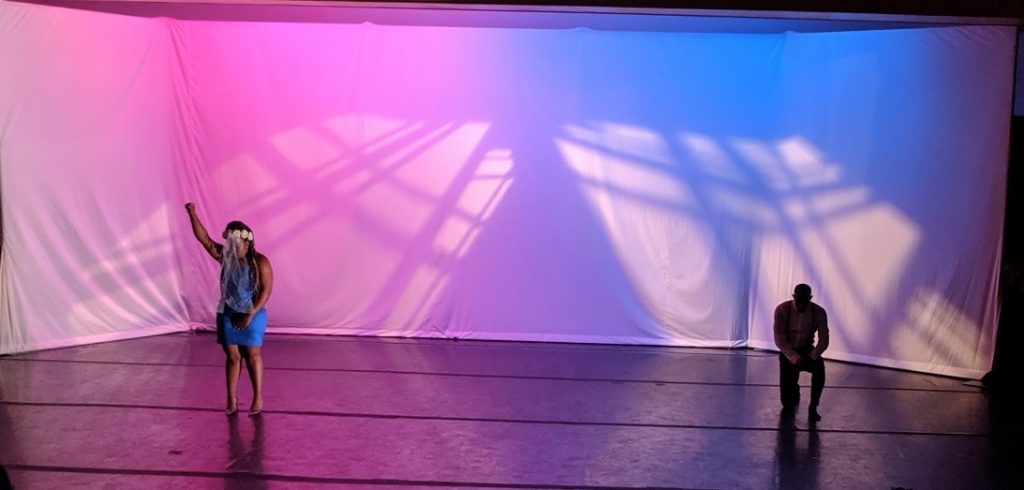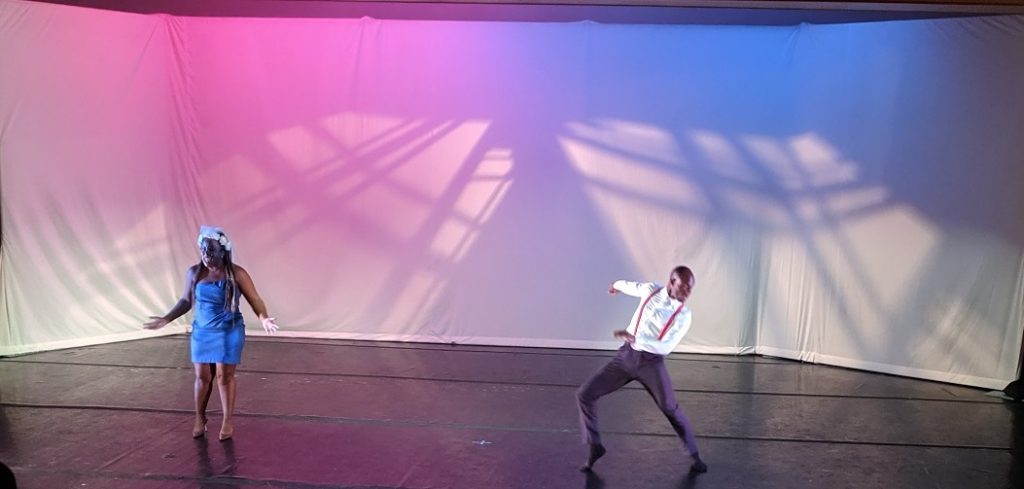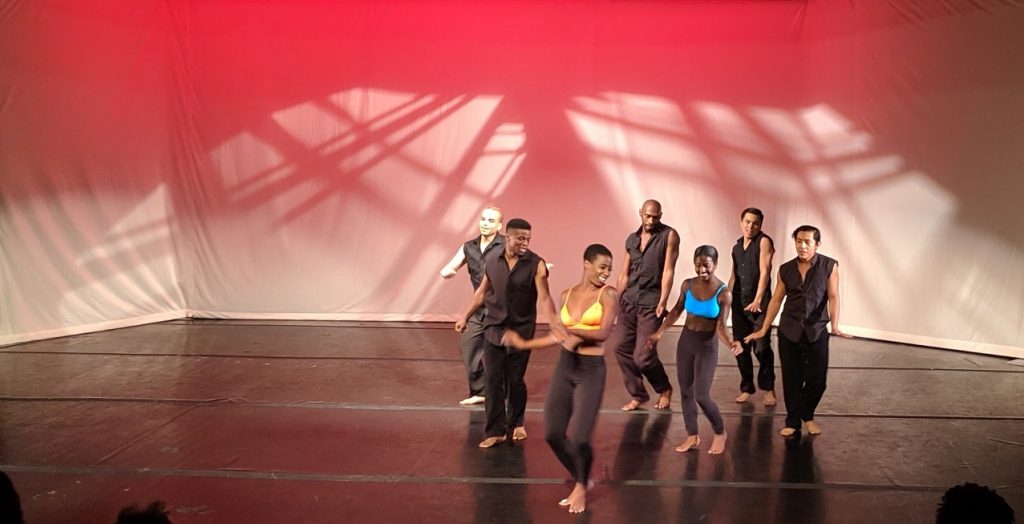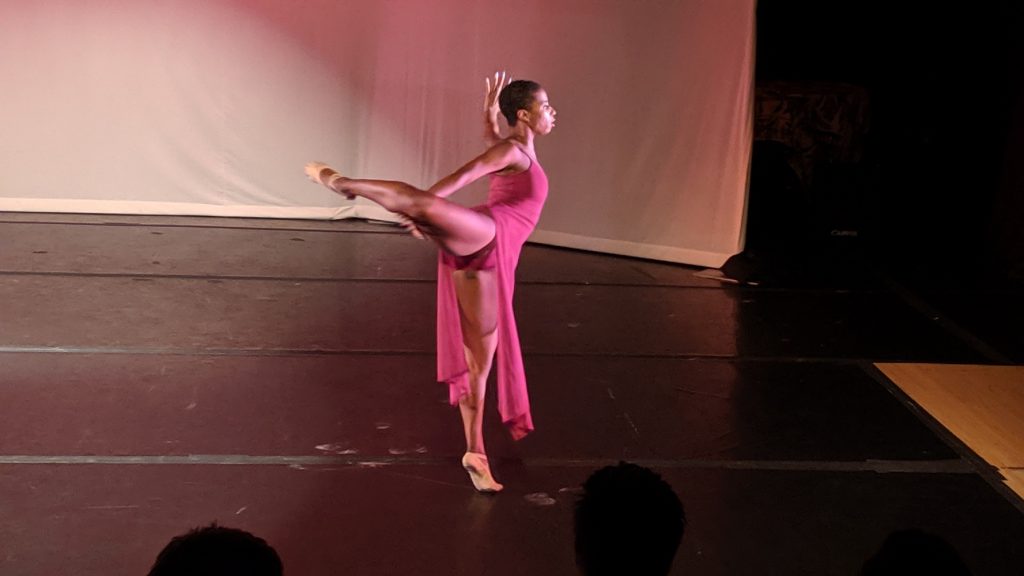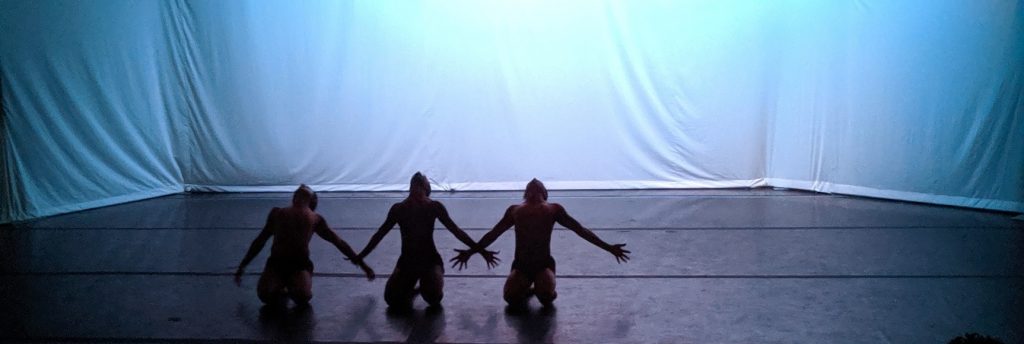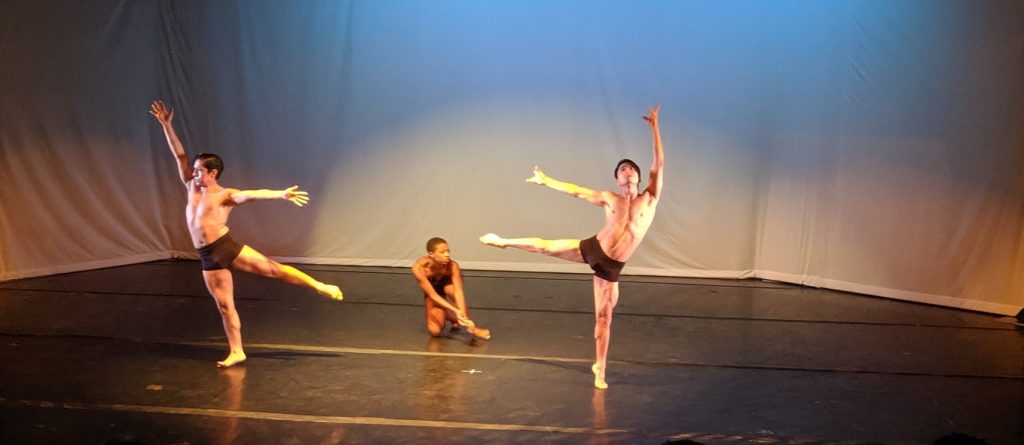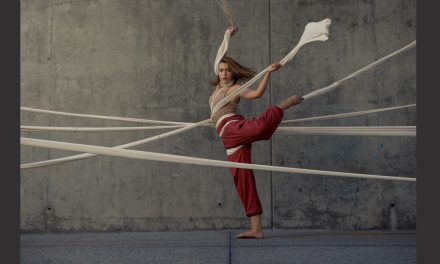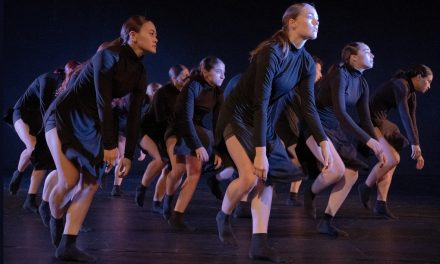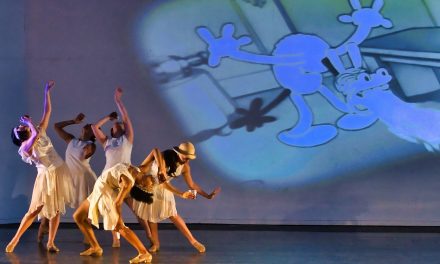On June 29, 2019 the Showcase at Lula’s New Visions/New Voices presented premieres, works in progress and excerpts of new works at the Lula Washington Dance Theatre. According to emcee Tamica Washington-Miller, what made this showing unique for LWDT was that most of the works on the program were created by company members. The exceptions were works choreographed by Lula Washington, Washington-Miller, Mikhail Fokine, and guest artist Esie Mensah. LWDT ventured into the world of technology with a program accessible only via one’s cell phone. Luckily, the PDF file was also downloadable. The performance was followed by food and a live music dance jam.
Lula Washington is a teacher, community builder, activist, and choreographer, who founded her company in 1980, and is about to launch its 40th Anniversary Celebration with performances at the Wallis Annenberg Center for the Performing Arts January 30 through February 1, 2020. In Excerpts from Fragments #2 (work in progress), Washington pointed out the inequalities between races, the deepening of divisions occurring within our nation, and she was literally shouting at us to “wake up”. She did so with humor, spoken word and, through movement, directly exposing the rawness of the Black struggle in this country; a prejudice that many white Americans wrongly, or ignorantly, pronounce as remedied since the election of the first Black President, Barak Obama. Anyone who reads, questions and/or opens their eyes knows that this is far from the truth.
There was a wonderful quote in the program by Washington that summed up her vision. “As the creator of “Fragments,” I am seeking to bring about a healing of our individual selves and community.” I personally look forward to Washington’s completed work. The very talented cast included Joshua Alexander, Joniece Boykins, Danny Guerrero, Krystal Hicks, Ongelle Johnson, Michael Tomlin III, and Tamica Washington-Miller.
Long time company member Bernard Brown is a beautiful dancer, performer, and a strong choreographer. He is also the founder and Artistic Director of BBMoves. Brown’s work often reflects social and racial injustices that he sees around him and Meji//Two (work in progress) performed to music by Flying Lotus was no exception. Meji translates as boarders and Brown’s work focused on the difficult, and often deadly migration of two immigrants in search of a better life. Performed with great clarity by Justin Morris and Glen Rodriquez, we saw and felt that journey and its cost.
Choreographed by Mikhail Fokine for Prima Ballerina Anna Pavlova in 1905, The Dying Swan is an iconic ballet solo. Re-staged by LWDT faculty member William “PG” Grinton, company member Ongelle Johnson did an admirable job, especially during her portrayal of the swan’s final moments.
Performed to music by Max Richter, Fire on Fire (excerpts from Michael C. Bradford’s Kindred Spirits) was a nice showcase for the talents of Joniece Boykins. Following The Dying Swan, Bradford’ flowing arm movement became far too familiar and repetitive. This was a nice choreographic study but this section did not stand up well on its own.
Tamica Washington-Miller is the daughter of Lula and Erwin Washington. She grew up taking classes at LWDT and went on to become one of the company’s leading performers. Presently, Washington-Miller wears many hats: Board Member, Associate Director / Designated as Next Generation Leader for Lula Washington Dance Theatre, dancer, teacher, Program Director, and foremost, a very gifted choreographer in her own right. THE ANCHORAGE PROJECT: Transportation (2019) was the product of an 18 month-long residency in Alaska. We only saw excerpts here, but the promise of a strong work was definitely there.
Washington-Miller explained that transportation in Anchorage is difficult enough for those who are from there, but it is especially challenging for the many African migrants who pass through that city with its harsh and long sunless winters. We saw migrants trying to decipher which bus to take as they entered a bus depot represented with a line of folding chairs. Soon, the chairs become vehicles for the difficulties of travel and integrating into a totally foreign culture. Performed wonderfully by Joshua Alexander, Joniece Boykins, Christopher Frazier, Danny Guerrero, Krystal Hicks, Ongelle Johnson, and Michael Tomlin III, Transportation suffered because the seemingly all-important oral interviews were so loud they were almost inaudible. Perhaps this was due to the imbalance of the sound system or the editing process for the music score by Marcus L. Miller. Hopefully this problem will be resolved.
Christopher L. Frazier is a tall, handsome man who is also an extraordinary dancer and performer. Stating that his work titled Black Hermoso Black Belle Black Bellissimo was about Black beauty and the meaning of sisterhood and brotherhood, the work had several wonderful moments. It appeared under-rehearsed, however, leaving me with a strong sense of jaggedness. Frazier’s use of props was a nice touch, but he often abandoned them before fully exploring their possibilities. The cast included Joshua Alexander, Melissa Barrow, Joniece Boykins, Michael Bradford, Christopher Frazier, and Glen Rodriguez. The music was by Black Motion and Patoranking, and except for those worn by Frazier, the costumes were not very flattering.
This Is America (work in progress) choreographed and performed by Michael Tomlin III, also offered promise. Here, a Black woman was dressed as a bride, while her groom, Tomlin, performed a beautiful solo nearby to a poignant poem titled I Do America written and performed by Christian Davis. I will admit that I had trouble focusing on Tomlin, who is a beautiful dancer, due to the powerful performance by Davis. At first, the poem reads like a bride speaking to her husband about his broken promises. Soon, however, we realize that I Do America is a brutal but honest referendum on America’s treatment of Blacks. Like a loyal bride, Blacks love this country and have remained loyal to it. One strong passage that stood out for me, was after a thorough explanation just how America has harmed an entire race, the poet asks, “And you fear me?” It was a powerful moment.
After the Rain was choreographed by Joshua Alexander and performed with great skill by Alexander, Melissa Barrow, Joniece Boykins, Ongelle Johnson, Michael Bradford. Danny Guerrero, Christopher Frazier, and Glen Rodriguez. The lighting was gorgeous, and the jazz dance movement was entertaining but sadly, the choreography appeared to be a series of classroom phrases strung together and performed to music by Little Dragon.
Performed to music by Alan Watts and Abel Korzeniowsky, Ongelle Johnson’s talents clearly upstaged Joniece Boykins’ choreography in R.E.M. This was an intense work of internal struggle and Boykins was a joy to watch.
White Noise (work in progress) had great promise but out stayed its welcome. Choreographer Micah Moch, who performed his movement quite well, would benefit by taking artistic scissors to this potentially powerful work. White Noise had video projections along the back wall, and music by Tom Benko, Joseph Shabason, and Maverick Sabre. Due to the imbalanced lighting levels, the images were all but washed out. At the movement when Moch, dressed in sweatpants, hoodie and a gray face covering, moved close to a second projector, many members in the audience (including me) could not see what was taking place. I later learned that the faces we next saw on the screen were also projected onto Moch’s gray mask. This was a huge error in staging.
Created by Danny Guerrero, Confined was a trio performed beautifully by Guerrero, Ongelle Johnson, and Glen Rodriguez. The two men often mirrored each other; their solos resembling a psychologist’s ink blot test, and the piece clearly reflected the tension and turmoil caused by any type of confinement. To highlight the tautness, the trio occasionally lined up to repeat rapid hand tapings on the floor, and beautiful lifts added additional moments of strain between the two. Guerrero chose his music wisely for this dance – Infra 4 by Max Richter.
The two-hour program ended on a high note with the Lula Washington Dance Theatre performing excerpts from the dynamic ZAYO by guest artists Esie Mensah. Mensah is a dancer, choreographer, teacher and model, and the 2014 Black Canadian Award Winner for Best Contemporary Dancer and the 2015 recipient of the Cultural Promotion award from the Ghanaian-Canadian Association. Her website explains that her work includes movements from Traditional and Contemporary African, Commercial, Urban and Contemporary dance styles.
Prior to the performance, Mensah explained that ZAYO was inspired by her own travels through life. We saw a woman who was challenged by both familiar and unfamiliar forces. Medium length wooden sticks were incorporated by the dancers to produce rhythms, borders and an opened door of opportunity for the main character to walk through if she so chose. There is confrontation, but the woman’s strength of character and endurance prevailed. ZAYO is filled with movement that the company best excels and I look forward to seeing it again with its full production elements.
For more information on the Lula Washington Dance Theatre and its upcoming Los Angeles appearances, click here.
Featured image:

